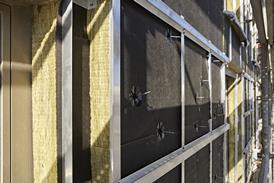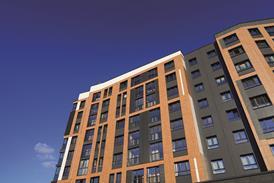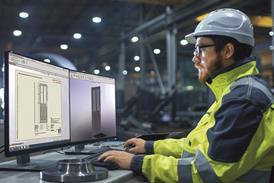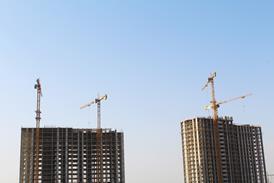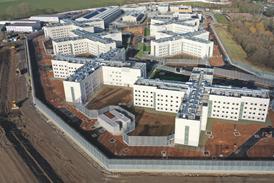Chiller selection is influenced by many factors. The main drivers are the cooling requirement, roof space, plant availability, efficiency, noise, reliability and refrigerant choice.
Cooling load is the most significant of these factors. Air-cooled package chillers are generally preferred for small applications due to their lower initial cost and ease of installation. Packaged plant for example, only requires chilled water connections and electrical power.
The overall plant space required has implications on both capital cost and development efficiency. Air-cooled chillers do not require enclosed plant space and their use will not affect development efficiency. However, the specification of air-cooled chillers may be constrained by the space available for a roof level plant compound.
The space requirement of a water-cooled system is higher than for an equivalent battery of air-cooled chillers. However a roof-mounted cooling tower has a smaller footprint than a chiller compound.
For example, to produce a cooling load of 1000 kW, an air-cooled system will require 98 m² at roof level. A water-cooled system would require 115 m², including 65 m² at roof level.
Many new-build projects can accommodate this spatial requirement. However, for refurbishment schemes, buildings with a feature roof, or projects on sensitive sites, space and planning restrictions can often only leave the option of a water-cooled system.
Water-cooled units operate at lower condensing temperatures and are generally more efficient than air-cooled chillers. However, the power loads of cooling towers and pumps should be considered The overall efficiency of a water-cooled system will reduce if, for example, high pump duties are necessary on tall buildings or projects with complex distribution routes.
The relative efficiencies of a range of chiller installations are summarised in table 1, with coefficient of performance (cop) values given for systems in three building sizes.
The cop indicates the efficiency of converting input energy into output cooling. It does not account for energy requirements beyond the chiller, such as pumps and cooling towers.
Efficiency is an important consideration when there are limits on available electrical power, particularly where an increased cooling load has to be handled with no increase in power consumption. Where there are power limits, high-efficiency centrifugal chillers can be selected to closely match available power, minimising the cost of redundant capacity.
Water-cooled chillers are generally more reliable than air-cooled units as they operate at lower stresses and are mechanically relatively simple. Air-cooled chillers have more moving parts and electrical components, and can potentially have a higher failure rate.
However, as air-cooled chillers are modular, back-up capacity can be added. Modular air-cooled chillers also share some components, such as controls, and it is good practice to specify multiple control systems and refrigerant circuits to guarantee reliable operation.
In general, screw compressors are more reliable than reciprocating units, having fewer moving parts. They also have the benefits of being quieter and having lower vibration levels.
Air-cooled chillers have high levels of redundancy due to their modular design. Redundancy can be provided in water-cooled systems by specifying smaller multiple units. However this will result in a higher overall cost.
Noise levels are increasingly important as the market becomes more sensitive to environmental issues. Where noise is an overriding factor water-cooled machines are preferred, as cooling towers or dry coolers are generally quieter. That said, technology advances have all but eliminated compressor noise from air-cooled packages.
The refrigerant used is closely linked to the type of compressor specified. Commonly used types are summarised in table 2.
Some refrigerants such as R11, R12 and R22 (an hcfc), are gradually being phased out. R11 and R12 will not be permitted in any new machinery from the end of 1999, and R22 will be withdrawn completely by 2010. Blends such as R407c and R410a are preferred for many types of positive displacement compressors and may be the long-term solution for smaller machines.
R134a , another medium pressure pure refrigerant, is now accepted as the long-term solution for most larger installations. Many of the new refrigerants have slightly lower efficiencies, however research is ongoing and new blends entering the market will undoubtedly yield better results.
Cost issues
Water-cooled chillers are cheaper to buy than their air-cooled equivalent. However, when the additional cost of installing the condenser water is included, the total costs generally exceed those of air-cooled installations. Typical installation capital costs are provided in table 3.
The running costs of the two types of system are broadly similar. Examined in isolation, water-cooled chillers have lower running costs, but additional costs are incurred by the pumps and cooling towers.
The pattern of use will also have a significant impact on running costs. Where a system is run at partial load over long periods due to the building load profile, a water-cooled centrifugal system would generally have the lowest running costs.
The life expectancy of water-cooled machines tends to exceed that of air-cooled chillers, mainly because of the lower stresses placed on the machines at lower operating pressures. Air-cooled chillers have a typical life expectancy of 15 years, whereas water-cooled machines will operate for 20 – 25 years.
Key selection criteria
Air-cooled package chillers
- duty range from 10 kW to 1700 kW;
- usually multi-compressor over 100 kW;
- most have positive displacement compressors – screw, reciprocating or scroll.
Water-cooled chillers
- duty range from 10 kW to 5000 kW;
- usually have single compressor in the higher duties, although a two compressor option is available;
- can use positive displacement or centrifugal type compressors.
Absorption chillers
Absorption chillers are typically powered by hot water, steam or gas. They are therefore usually applied in projects where there is little or no electrical power.
They have very low efficiencies compared to other mechanical refrigeration systems, but can use waste heat as a free source of energy. Water is used as the refrigerant, making them environmentally friendly.
Absorption chillers are often specified in conjunction with chp plant. The duty range is vast, varying from 50 kW to 18 000 kW.
Source
Building Sustainable Design










